Sponsored by Garmin
We here at Fish’n Canada spend a lot of time talking about structure. And for good reason – structure, and other definable lake features, simply hold fish. A great representation of this, as seen in our open water article, can be seen below:
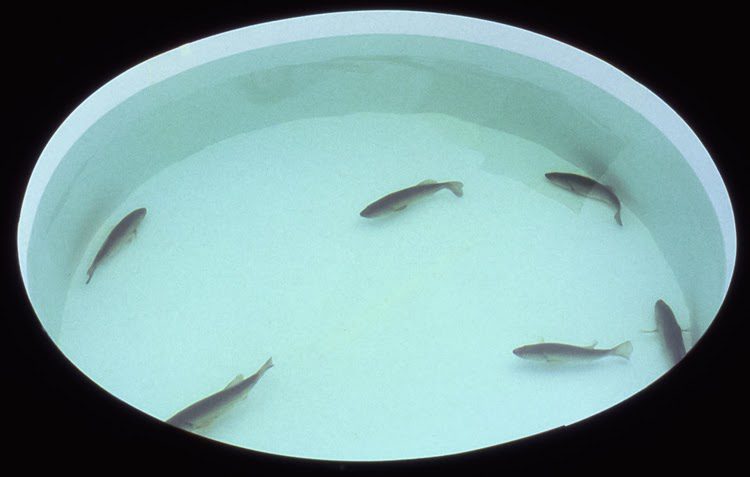
In image #1 above, you see a container of water with nothing else but fish in it. It has no cover, features, or structure. The fish are all swimming around aimlessly or randomly. Imagine this in a huge lake… where would you start to fish???
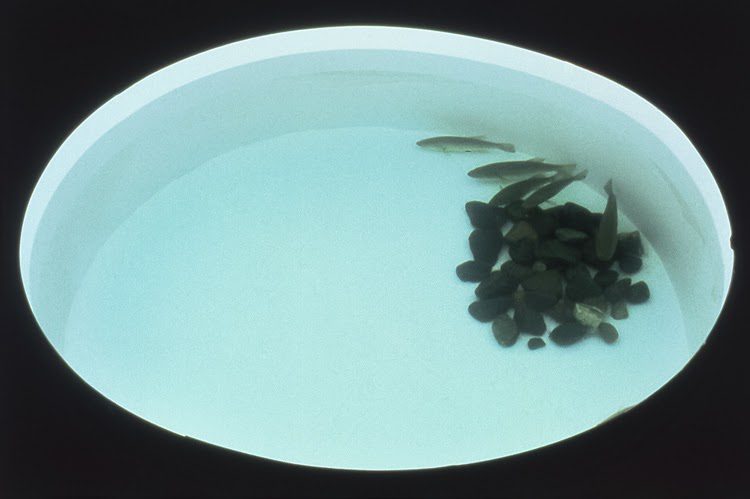
In image #2 above, imagine these pebbles and stones as a hump or a point. Just like a magnet, it immediately draws all the fish to it.
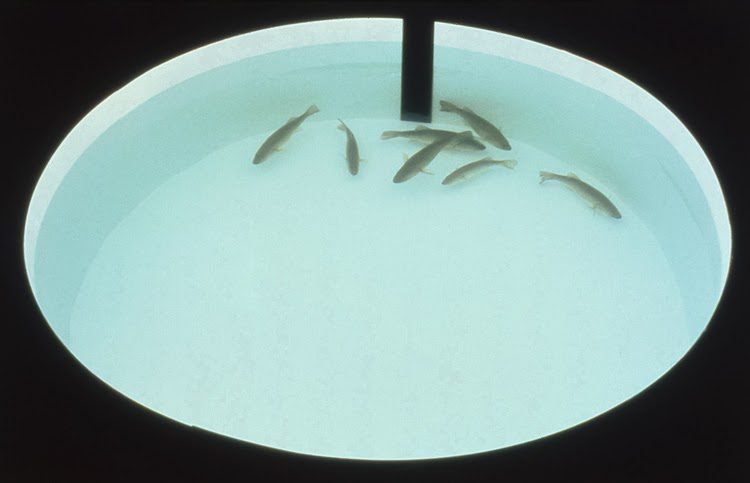
In image #3 above, a simple piece of black electrical tape was affixed to the side of the pool. Amazingly all the fish were attracted to this dark line. This example could be defined as either structure or cover.
Although these examples were originally used to highlight the importance of structure in open water, the same principles apply when things freeze over and identifying the lake features that most commonly hold the species you are targeting is essential to making the most out of your time on the ice.
So without further ado, here are our top 10 lake features/structure to have your eye on this ice season!
TIP: Come here looking for a specific species? Press Ctrl-F on your keyboard and type the species you are looking for to see all the lake features that might be holding your favourite fish.
1 – On-Shore Points
Species: Brook Trout, Rainbow Trout, Lake Trout, Splake, Walleye, Pike, Panfish
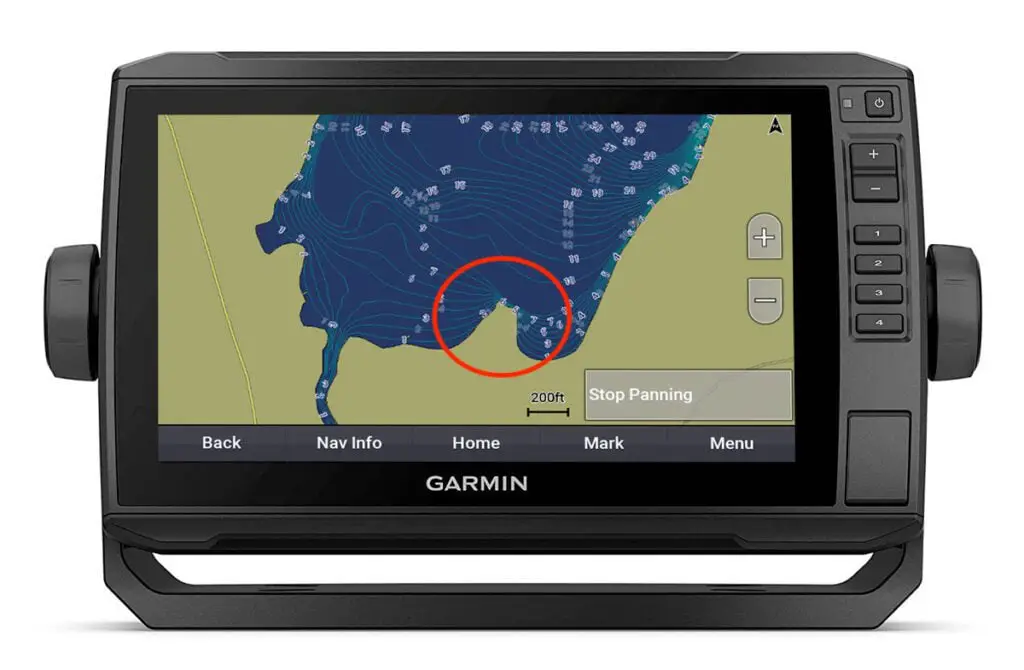
On-shore points are one of the first things to look for when scouting a new lake. This is especially true in lakes that don’t have depth charts as they are one of the only pieces of structure that are clearly identifiable from Google Earth.
As you can see in the screenshot, on-shore points are simply protruding areas in the sides of lakes. These areas virtually always hold some kind of fish species as they are magnets for baitfish and, in turn, the fish that eat them.
If you’re after trout or panfish, look for points with wooded structure. If you’re after Walleye or Lake Trout, confirm with your depth chart that steep ledges (changes in depth) are nearby.
2 – Off-Shore (Underwater) Points
Species: Lake Trout, Splake, Walleye, Panfish, Burbot, Whitefish
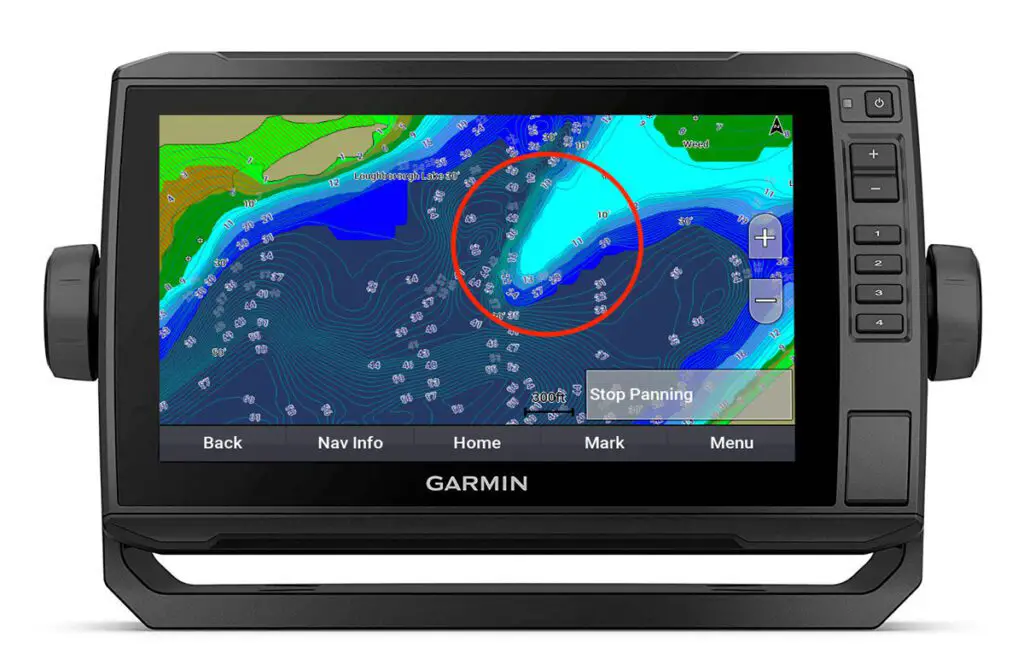
Off-shore points are similar in every way to on-shore points except, well… they’re off-shore.
This means that these points are only visible using your chartplotter and will often need to be located before you hit the lake. Similar to the on-shore points, these areas are capable of holding a wide variety of fish as they provide the depth changes and structure that draw baitfish in during the winter.
In the example pictured above, the deeper side of this point would be great for Lake Trout, Splake, Whitefish, or midday Walleye. In the evening, the steep part of this point could provide excellent Walleye or Burbot fishing. And for those after panfish or trout, the flat on the top side of the point could provide excellent cover if rocks and wooded debris are present.
3 – Shallow Flats
Species: Brook Trout, Splake, Rainbow Trout, Panfish, Pike
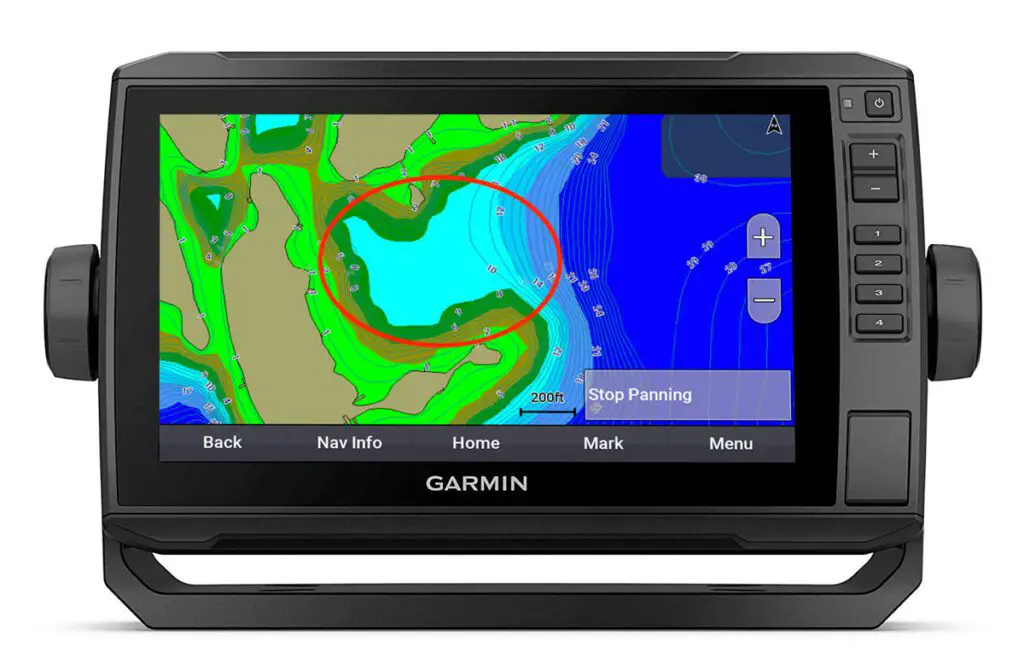
Flats are rather self-explanatory, being simply a flat large area of consistent depth.
Though they may look boring on a map, these areas can be excellent for holding structure-oriented fish such as Brook Trout, Rainbows, and Pike as they frequently hold weed growth and wooded debris. These shallow areas are also some of the first to get safe ice, often being fishable while deeper areas of the lake are still seeing open water.
When these flats occur in deeper water, they are often referred to as the “basin”. These areas, when containing gravel and other debris, can be great for species such as Burbot, Whitefish, Lake Trout, Kokanee, and midday Walleye.
4 – Ledges
Species: Walleye, Panfish, Burbot, Lake Trout
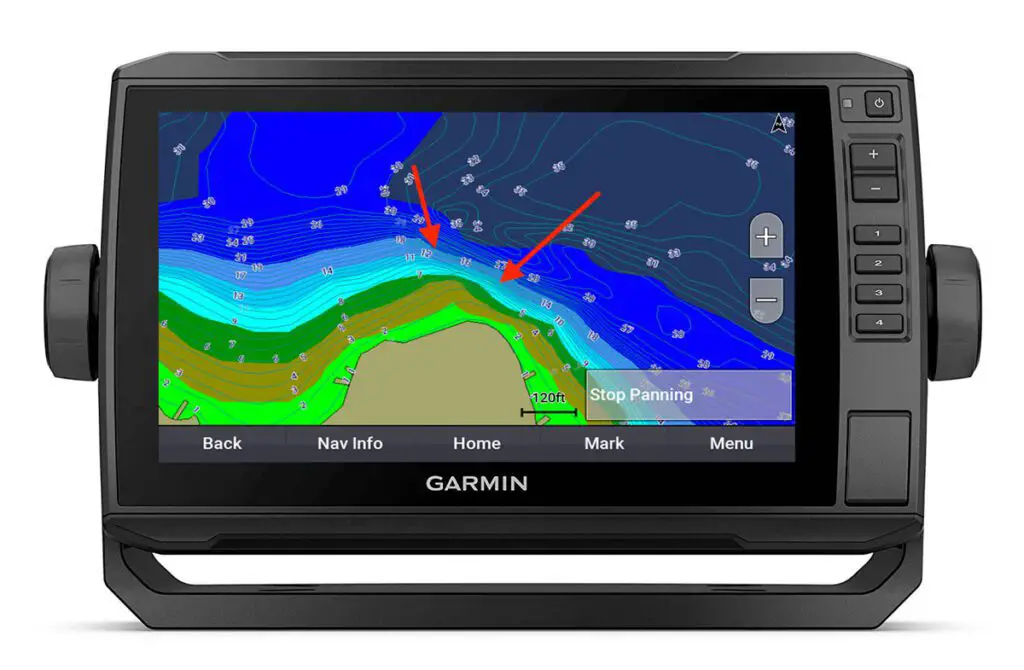
Ledges (aka. Dropoffs) are one of the most reliable lake features during the hardwater season.
These features are simply any area that contains a steep change in depth. In the example above, this depth change is sudden, as revealed by the closeness of the contours highlighted in light blue. An area like this would be excellent for any species that change their depth throughout the day such as Walleye, Perch, and Burbot.
That being said, ledges that contain more gradual drops can still be productive, especially if they are the only depth changes in a relatively flat body of water.
5 – Humps
Species: Walleye, Panfish, Lake Trout, Pike, Burbot, Splake
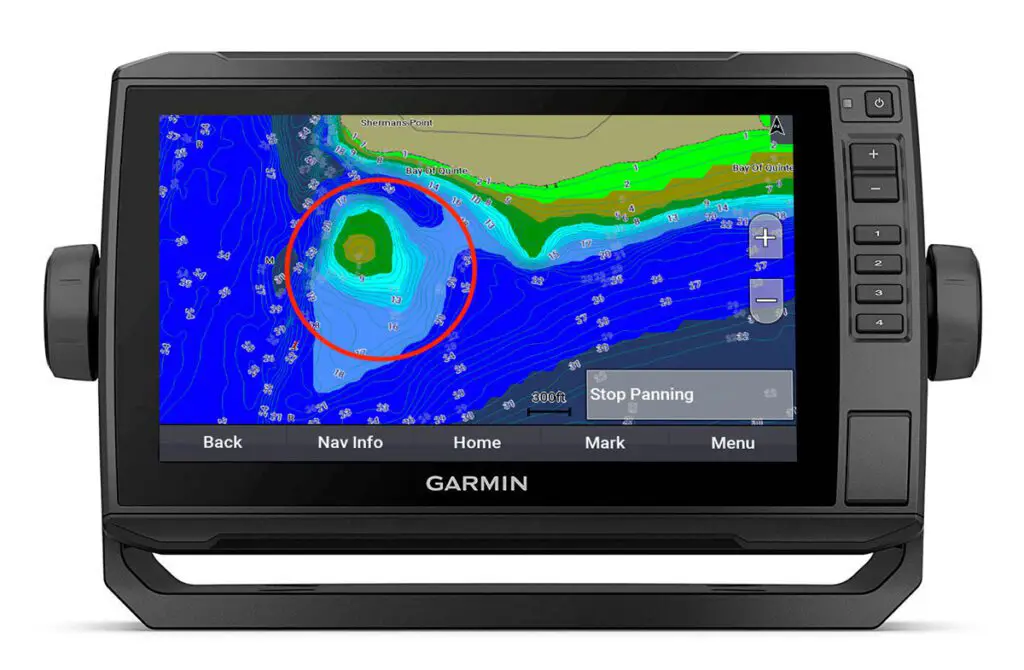
Humps are another classic piece of open water structure that retain their effectiveness throughout the winter.
These features are defined as any circular (or semi-circular) area that contains a steep change in elevation at the center. Essentially, these are sunken islands and are visible as such on most chartplotters.
Just like in the summer, humps are Walleye magnets during the ice fishing season as fish migrate from shallow to deep throughout the day. Shallow humps can also be great for Pike, Panfish, and a variety of trout species.
When humps are found in deeper water, Lake Trout are the primary occupant. If the humps are large enough and contain rocky structure, look for Burbot to move into the area in the evening as well.
6 – Horseshoe
Species: Lake Trout, Splake, Burbot, Whitefish
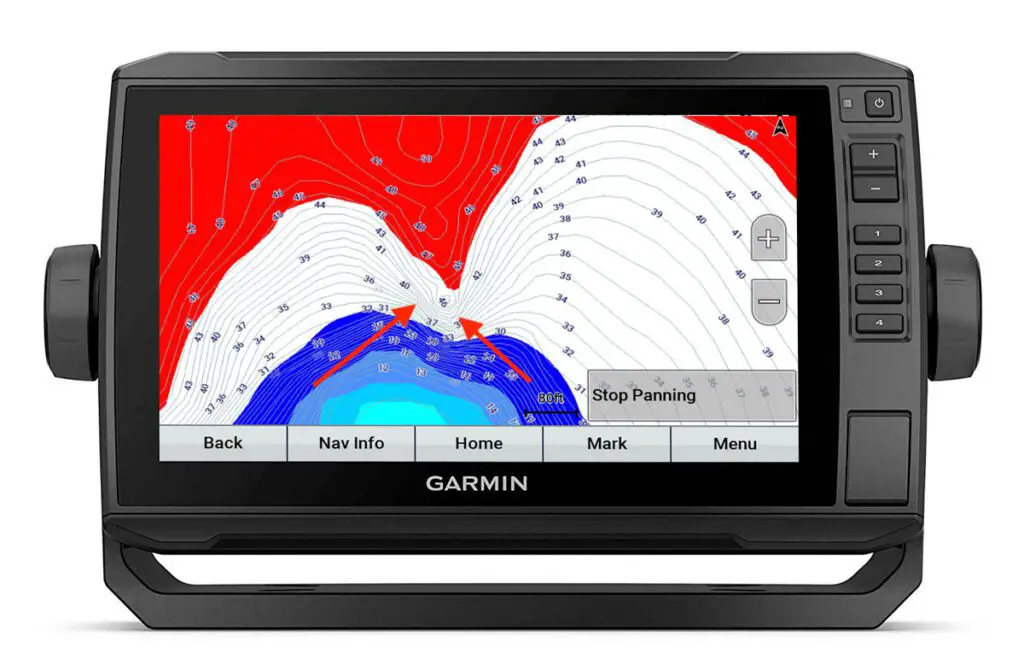
Horseshoes occur when a deep section of water extends into a shallower portion. As seen above, this creates a sort-of reverse point, with a small cavern of deep water existing in an otherwise shallow flat.
Lake Trout are the primary species to call the horseshoe home, however, species such as Burbot and Whitefish will also be present if gravel is around.
7 – Weedlines
Species: Pike, Walleye, Panfish, Rainbow Trout
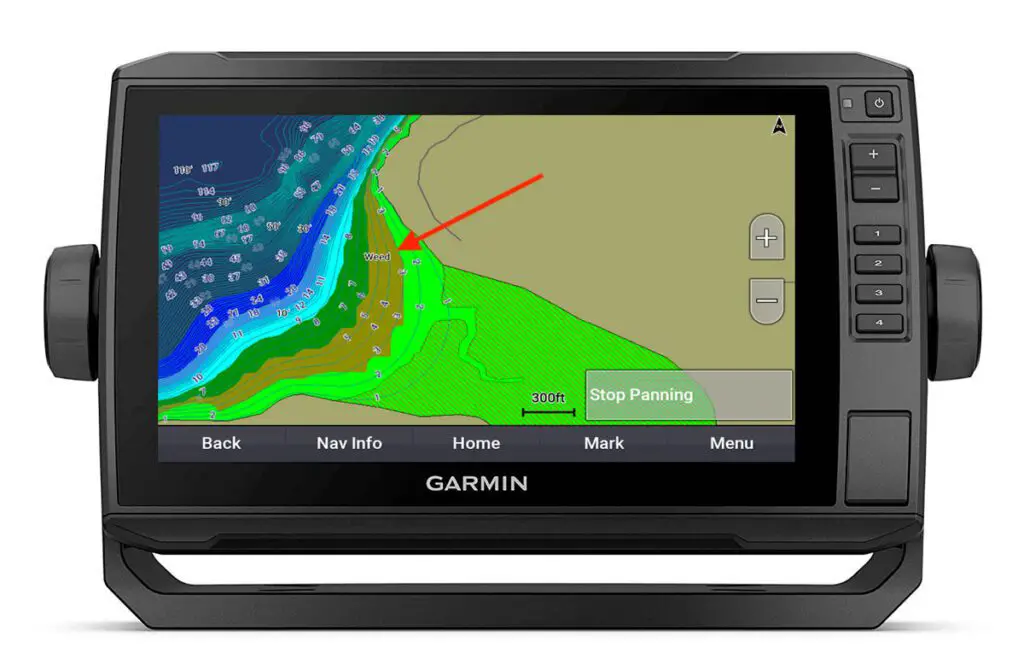
Weedlines are much harder to find during ice fishing season, but those who know the water or who marked spots in the summertime can find plenty of action once things lock up. If you happen to have a Garmin LiveScope Ice unit, finding weedlines in the Forward Mode is a piece of cake.
Species such as Pike, Rainbow, Walleye, and Perch will all stick to these areas early in the season when weed-bound forage is still present. Unlike some of the other lake features we mentioned, however, the productiveness of weedlines will wane as the winter rolls on and the weeds begin to die, so get your fishing in early in the season.
8 – Islands
Species: Walleye, Pike, Brook Trout, Splake, Lake Trout, Burbot, Panfish
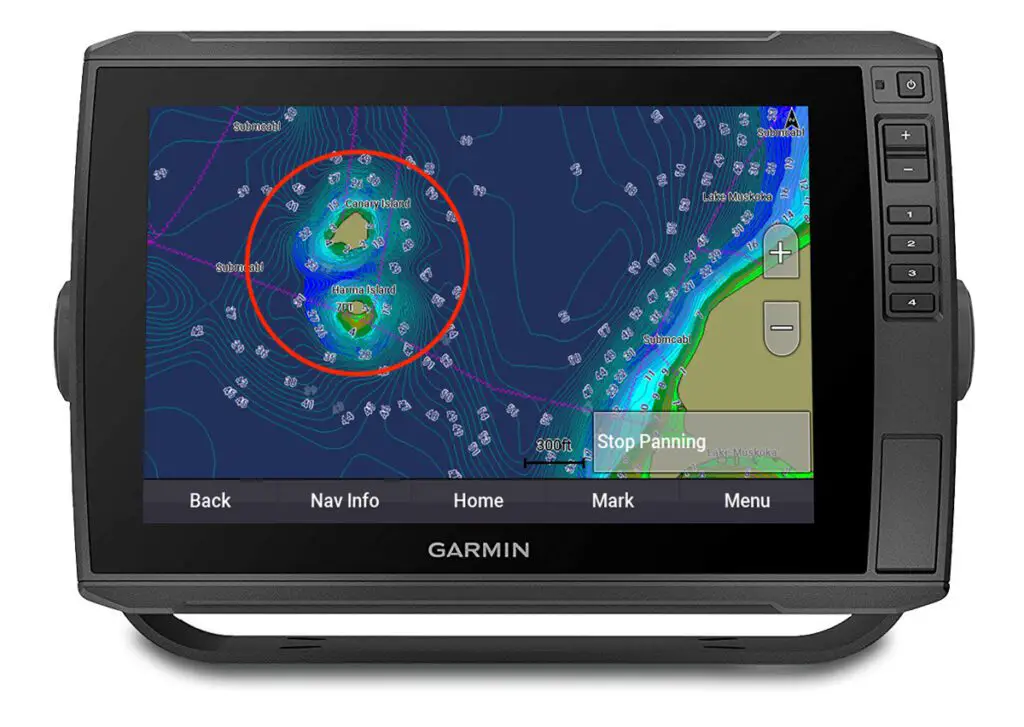
Like on-shore points, finding islands requires very little work and is extremely reliable on lakes that have no depth charts.
Though this may be obvious (since the tops of them are out of the water) these areas always contain significant depth changes and can hold a wide variety of gamefish species as a result.
When islands occur near deep water, Lake Trout and Burbot are excellent targets. When they contain large shallow flats and ledges, drop a line for Walleye, Pike, Perch, or Brook Trout.
9 – Streams/Rivers
Species: Walleye, Pike, Panfish
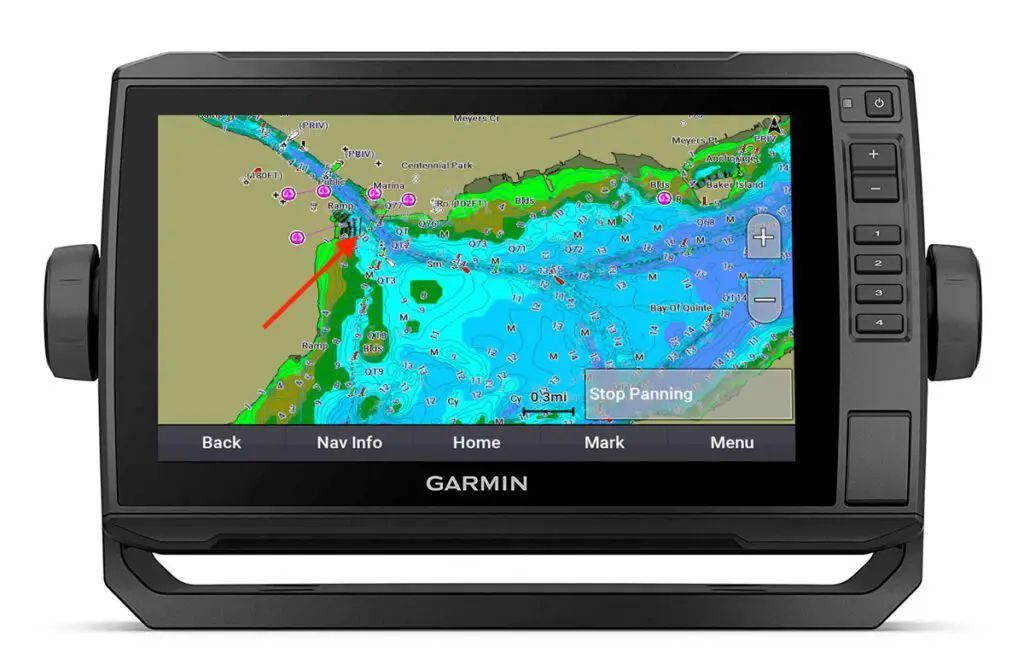
Streams and rivers are reliable year-round and become especially productive during the latter half of the ice fishing season.
Since many of our most popular gamefish are spring spawners, the mouths of these rivers begin to fill with staging fish as they prepare to spawn. Walleye and Pike are famous for this behaviour and will be the main targets in these areas.
One word of caution, however, is that moving water is temperature-stable. Although this does mean that both fish and their forage are present year-round, it also means that it takes very cold temperatures for these areas to freeze. For this reason, it is always important to use extreme caution when accessing areas with current and to always have an eye on flow rates where they are available. You could have 6-inches of ice in one area and 2-inches within a couple of steps.
For more on how to stay safe during the ice fishing season, check out the link below:
10 – Choke-Points/Funnels/Narrows
Species: Walleye, Lake Trout, Pike, Panfish, Burbot, Whitefish
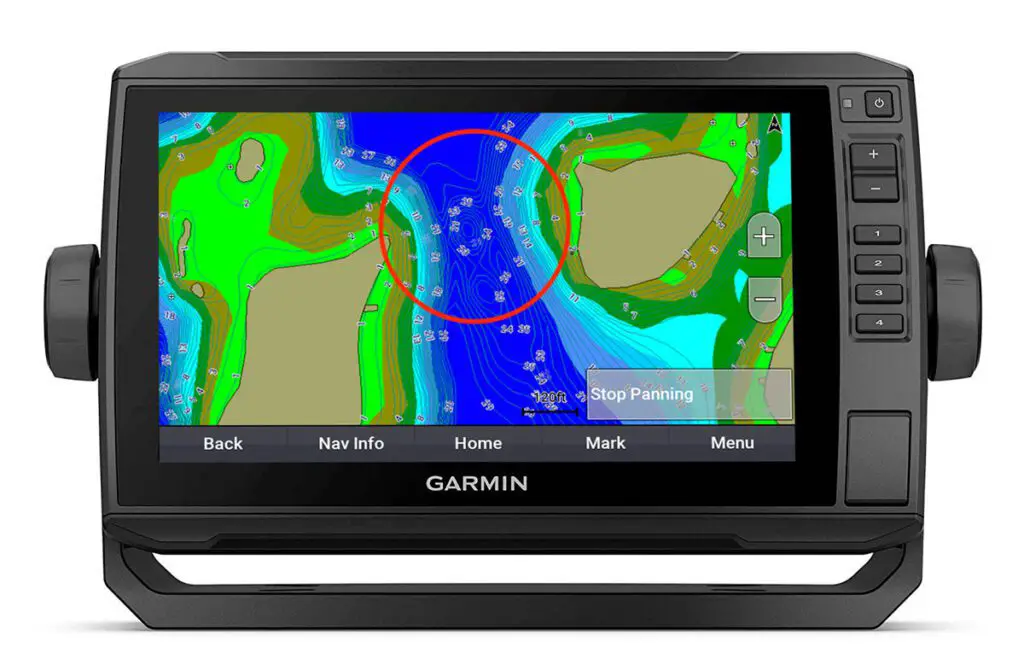
Last, but certainly not least, on our list of lake features/structure for ice fishing is choke-points (aka, Narrows/Funnels).
These areas occur anywhere that two pieces of land force water through a small section of the lake. As seen in the above example, this can occur near land, as well as in open water when two nearby islands force water between them.
These areas earn their names as “funnels” not only because they force water through them, but because they funnel species of all kinds through them as they migrate across the lake. In deep water, Burbot, Whitefish, Kokanee, and Lake Trout all use these as highways. In shallower areas, Walleye, Perch, and Pike will all be moving through at various times of the day.
As with rivers, funnels are also places where caution is needed as the narrowing down of the lake causes significant current.
We hope these tips help point you in the right direction this ice fishing season. Remember, no fish is worth falling through the ice for and always take all precautions possible when accessing unknown areas.
For those already prepping for open water season, check out Ang and Pete’s Top 10 Types of Structure and Cover for fishing at the link below.
